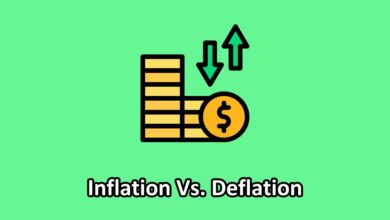Welcome to the ultimate showdown between two creative realms that have captivated audiences for decades: cartoon vs animation. From childhood favorites like Mickey Mouse and Bugs Bunny to modern masterpieces like Toy Story and Frozen, these artistic forms have taken us on unforgettable journeys through fantastical worlds. But what truly sets them apart?
Join us as we delve into the distinct realms of cartooning and animation, uncovering their unique techniques, storytelling styles, and the magic they bring to our screens. So buckle up, grab some popcorn, and prepare to be mesmerized as we unveil the hidden secrets behind these beloved art forms!
Cartoon Vs Animation (A Comparison)
| Business | Animation |
|---|---|
| A cartoon is a form of visual art and entertainment that often refers to a short film or a series of images or drawings, typically characterized by a humorous, satirical, or whimsical tone. | Animation is a broader term that encompasses the creation of moving images, either through traditional methods (like hand-drawn frames) or modern computer-generated techniques. |
| They are characterized by stylized visuals with exaggerated features, like large eyes and outsized heads. | They strive for naturalistic movements and realistic proportions of characters and objects. |
| They are generally more cost-effective, as they require fewer specialized resources and less time for production. | They are more expensive due to the need for specialized equipment and the time-consuming process of creating detailed visuals. |
| Cartoons often rely on a combination of traditional drawing techniques and digital tools. | Animations are created entirely through the use of computer software, often without traditional hand-drawn elements |
| Cartoons are primarily used for comedic purposes, often delivering humor through visual gags and exaggerated actions. | Animations are commonly used to tell stories with comprehensive narratives that can be serious, dramatic, or comedic. |
| Cartoons are typically aimed at children and young, with lighthearted themes such as friendship, humor, or adventure. | Animations may explore more mature and complex topics, including science fiction, war, horror, and themes targeted at adult audiences. |
| They often feature limited and stylized movements, with a focus on conveying humor or satire through exaggerated actions and expressions. | They are known for their fluid and lifelike movement. It can depict realistic motion in 3D animation or create a wide range of movements in 2D animation. |
| Classic examples of cartoons include Looney Tunes, Tom and Jerry, and Popeye the Sailor. | Animation examples encompass a wide range of styles and mediums, such as Disney’s 3D animated films like “Frozen” or 2D classics like “The Lion King,” as well as computer-generated animations like “Toy Story” and stop-motion animations like “Wallace & Gromit.” |
Cartoon vs Animation: What are They?
A cartoon is a form of two-dimensional illustrated visual art. It is typically created for entertainment, political commentary, or advertising. Cartoons are usually humorous in nature and often include anthropomorphic characters.
Animation is the process of creating motion pictures through the rapid display of a sequence of images that minimally differ from each other. Animation can be used to create special effects in films and TV programs, computer games, commercials, and websites.
Characteristics of Cartoons
Cartoons and animations are both forms of visual entertainment, but they differ in a few key ways. Here are 5 characteristics that define cartoons:
- Cartoons are designed to make audiences laugh, whether it’s through slapstick humor or clever wit.
- Cartoons often poke fun at current events or pop culture, and they don’t take themselves too seriously.
- Unlike animation, which can tell complex stories with multiple plotlines, cartoons typically have one main plot that is resolved within a few minutes.
- They rely on visuals more than dialogue. Because of their limited time frame, cartoons rely heavily on visual gags and expressions to tell their story. This is why many cartoon characters are known for their exaggerated features and outlandish behavior.
- Many classic cartoons from the early 1900s are still beloved by audiences today, which proves that good cartoons have a lasting appeal.
Characteristics of Animations
Animation and cartoons are two distinct creative realms, each with its own set of characteristics. Here are five key ways they differ:
- Animation is more than just drawings in motion.
- They often have a more serious tone.
- They often take longer to produce.
- Animators have greater control over the final product.
Key Differences Between Cartoons and Animations
- Technique: Cartoons are usually drawn by hand and can be done in different styles. Animations are made with 3D modeling software or other specialized application programs like Adobe Flash, Blender, or After Effects.
- Artistic Techniques: Cartoons vs. Animations – Cartoons often rely on a combination of traditional drawing techniques and digital tools, while animations are created entirely through the use of computer software.
- Narrative Approaches: Cartoons vs. Animations – Cartoons tend to be used more for comedic purposes, while animations are often used to tell stories and provide a more comprehensive narrative.
How Cartoons and Animations are Used in Different Media
Cartoons and animations are used across a variety of different media, from films and television to video games and advertising. Each medium employs cartoons and animations in different ways, depending on the needs of the story or project.
Films and television shows often use cartoons and animations to tell stories that would be difficult or impossible to recreate with live-action footage. For example, animated films can take audiences to imaginary worlds, while cartoons can be used to tell jokes or create absurd situations.
Video games also make use of cartoon and animation styles, particularly in MMOs (massively multiplayer online games) where players need avatars to represent them in the game world. Games like Fortnite and Overwatch have become increasingly popular in recent years thanks in part to their vibrant and stylized graphics.
Businesses large and small often utilize cartoons and animations in their advertising campaigns. These visuals can help grab attention and better communicate a brand’s message or product.
Popular Examples of Cartoons and Animations
The realm of cartoons is generally thought to be limited to the funny pages of newspapers and child-centric television programming. In contrast, animation is often seen as a sophisticated art form that requires significant resources and training to produce. Here are a few examples of some popular cartoons and animations.
Tom and Jerry – Tom and Jerry is an iconic cartoon series that follows the comedic adventures of a mischievous mouse, Jerry, and his feline nemesis, Tom. The core of the story revolves around the two characters’ schemes to outwit each other. Its slapstick humor and vibrant animation style have made it one of the most beloved cartoons of all time.
Toy Story – Toy Story is one of the most popular animated films of all time. It follows the story of a group of toys who come alive when their owners are not present. The film features incredibly detailed computer-generated animation sequences that bring its characters to life in stunning detail. The movie’s themes of friendship, loyalty, and adventure resonated with viewers around the world, making it one of Pixar’s most successful releases.
Similarities Between Cartoon and Animation
- Both cartooning and animation are visual arts that use drawings to create sequences of images that tell a story.
- Both require a high level of drawing skill and creativity.
- Cartooning and animation both involve creating characters and stories through drawings.
- Both cartooning and animation require a great deal of patience and practice to perfect. The best way to improve is to keep creating new characters and stories and to experiment with different techniques.
Conclusion
In conclusion, cartoons and animation are distinct creative realms that have their own unique characteristics. While cartoons tend to be more humorous and lighthearted, animations are often used to tell stories with more depth.
Both forms of art can be used to express creativity in different ways, so it is important to find the form of art that best suits your needs. No matter which form you choose, both cartooning and animation can provide an enjoyable experience for all ages!
FAQs
Are Animators and Cartoonists the Same?
No, animators and cartoonists are not the same. Animators create moving visuals, often for film, television, or video games. Cartoonists create static visuals, usually in the form of comics or illustrations.
Is Anime a Cartoon or Not?
Anime is a form of animation, not a cartoon. It is a specific style of animation originating in Japan that has since spread around the world.
What Distinguishes Cartoons from Animations?
Cartoons emphasize visual exaggeration and simplicity, while animations focus on lifelike movement and intricate storytelling.
Who is the Primary Audience for Cartoons?
Cartoons primarily target younger audiences, often delivering humor and life lessons in bite-sized portions.



